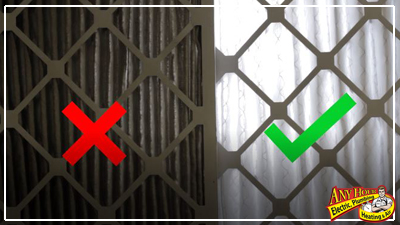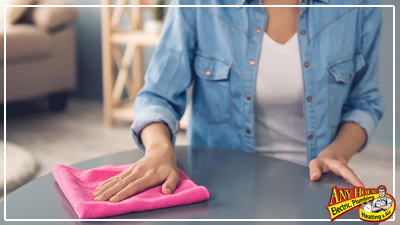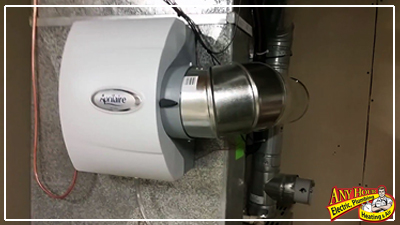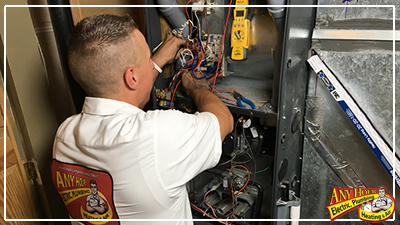Improving the Air Quality in Your Home This Winter
Right now, there’s one thing that most everyone has in common: we’re all staying home. Families are working from home, working out at home, homeschooling, eating meals at home, playing, creating, and otherwise living strictly at home. Not only can this be a test of sanity and patience sometimes, but this can also be an issue of health. We’re staying inside to avoid contracting COVID-19, yet being locked up in the house can also be an issue of indoor air quality.
Modern homes and buildings are built to be energy-efficient, well-insulated, and tightly constructed. This is great when it comes to heating and cooling costs, but it poses a significant problem when you start to think about airflow and circulation. This poor circulation means that any allergens, dust, molds, or bacteria that are brought into the home just hang out there, thriving, growing, and causing allergic reactions or sickness for the people inside.

1 - CHANGE YOUR FURNACE FILTER
Your furnace filter is the first line of defense against large particulates circulating throughout your home. Take the filter out of your furnace and hold it up to the light. If you can’t see light through the filter, it’s time to change it out. If the filter is dirty (lots of dust particles/can’t see light through it well), change it out with a new one. Also, check what the MERV rating is on your filter. Poor quality rated ones (ones with a low number) won’t do as good of a job as a higher rated one. We recommend getting a filter within the range of MERV rating of 7-12. You can read more about this on our Ask Any Hour - Furnace Filter blog post.

2 - KEEP THINGS CLEAN & TIDY
One of the simplest ways to improve indoor air quality is to keep surfaces clean. Regularly sweep and vacuum the floors to keep dust down and consistently wipe down tables and countertops to keep germs and other bacteria to a minimum. When dusting, it’s also a great idea to wipe down surfaces with a rag, using furniture polish, as opposed to using a feather duster, for example, that will release the settled dust back into the air. Be sure to also keep the leaves of your plants dust-free by wiping them gently with a wet cloth. This will allow them to continue to “breathe” freely and help keep the air clean.

3 - PURIFY WITH PLANTS
Plants are an inexpensive, decorative, and organic way to scrub some contaminants out of the air. Not only do they take in CO2, but they increase oxygen levels in the home and remove myriad other toxins, such as benzene, formaldehyde, mold, and others. However, not all plants are as effective as others. Some of the best plants to use inside your home are English Ivy, Boston Fern, Spider Plant, Peace Lily, Bamboo Palm, and Aloe Vera.

4 - BUY AN AIR PURIFIER
Those who have severe allergies or sensitivities could benefit a lot from getting an air purifier to help with cleaning the air in their home because a lot of times regular cleaning just isn’t enough. There are a few different options for this.
- Special Air Filter: attaches to your furnace to trap more dust and particles then a regular filter does.
- UV Light: installed on HVAC system and kills harmful microbes such as germs, viruses, mold spores, and chemicals in the air that enter the system.
- Whole-home Purification Systems: installed on HVAC system and sends hydroperoxides into the air to destroy microbes (ex Reme Halo).
For more information on this and other technologies, talk to your HVAC professional to see which solution might be the best fit for your family.

5 - INVEST IN A HOME HUMIDIFIER
A whole-home humidifier works at fighting the effects of winter dryness like itchy skin, too much static, and dry nasal passages along with your HVAC system. This might be a good option for you if you have a dry home.

6 - HAVE YOUR FURNACE PROPERLY INSPECTED
It's important to have a professional inspect your unit annually. Old furnaces often fail to properly clean the air in your home. If your home feels stuffy and stale or you begin to notice an increase in allergy symptoms, frequent static shocks, drooping plants or cracking furniture, your old furnace may be to blame. In addition, as combustion furnaces age, the risk of the heat exchanger developing cracks increases. Annual furnace inspections are essential – even on newer furnaces - for detecting these often invisible cracks which could lead to carbon monoxide poisoning. If your furnace is in the 16-20 year age range, it may be time to start shopping.

Author: Amber Smith-Johnson
Copyright © 2019 by Any Hour Services
Dec 22nd 2018

